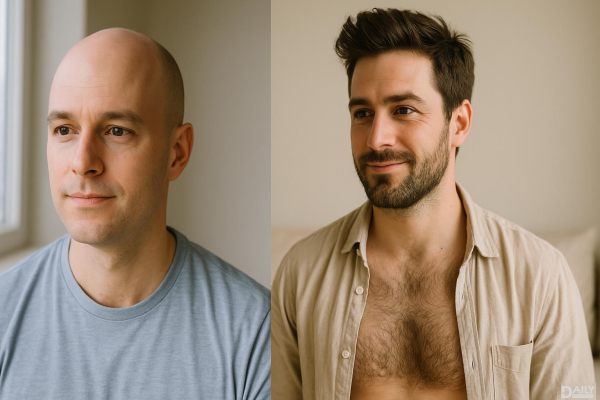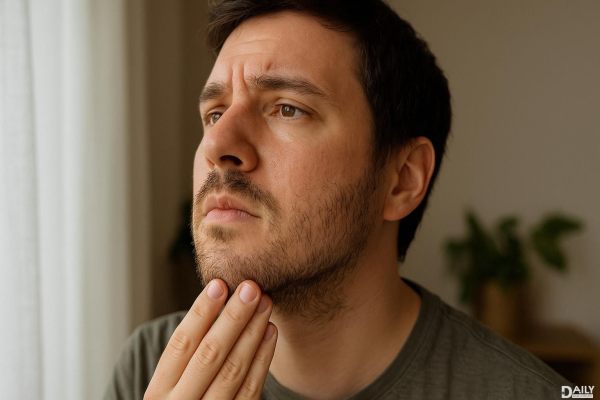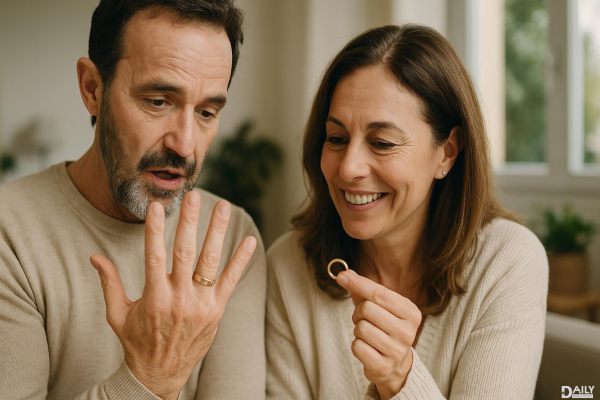Ever wondered if your chest hair could hold the secret to a fuller head of hair? It might sound like a wild theory, but there’s actually some science behind the surprising link between chest hair and male hair growth. While chest hair itself won’t magically sprout new strands on your scalp, understanding the connection between body hair and scalp hair can shed light on how to tackle male pattern baldness. Let’s dive into the fascinating world of hair growth and uncover what your chest hair might be trying to tell you.

Hair growth, whether it’s on your chest or your scalp, is governed by hair follicles. These tiny structures are like mini factories that produce hair strands. The key player here is dihydrotestosterone (DHT), a hormone derived from testosterone. DHT binds to hair follicles, and depending on the type of follicle, it can either promote or inhibit hair growth. Scalp follicles are more sensitive to DHT, which is why they shrink over time, leading to thinning hair. On the flip side, body hair follicles, like those on your chest, are less sensitive to DHT and can actually thrive in its presence. This difference in sensitivity is why some men can rock a full chest rug while battling a receding hairline.
If you’ve got a thick patch of chest hair, it might indicate that your body produces higher levels of testosterone, which is converted into DHT. While this is great for body hair, it’s not so great for your scalp. High DHT levels can accelerate hair loss in men who are genetically predisposed to male pattern baldness. So, if you’re noticing more hair on your chest and less on your head, it’s not just a coincidence—it’s a hormonal signal. The good news? Understanding this connection can help you take proactive steps to manage your hair health.
Now that you know the link between chest hair and scalp hair, what can you do about it? First, consider getting your hormone levels checked. A simple blood test can reveal if you have elevated DHT levels. If you do, there are treatments available to help. Medications like finasteride and minoxidil can block DHT and stimulate hair growth. Finasteride works by inhibiting the enzyme that converts testosterone into DHT, while minoxidil increases blood flow to the scalp, encouraging follicles to produce thicker, healthier hair. Combining these treatments with a healthy lifestyle—think a balanced diet, regular exercise, and stress management—can give you the best shot at keeping your hair where you want it.
If you’re not keen on medications, there are natural remedies that can help support hair growth. Saw palmetto, for example, is a plant extract that’s believed to block DHT, much like finasteride. Pumpkin seed oil is another natural option that’s been shown to promote hair growth in some studies. Scalp massages can also be beneficial—they increase blood circulation to the scalp, which can stimulate dormant follicles. And don’t underestimate the power of a good diet. Foods rich in vitamins A, C, D, and E, as well as biotin and zinc, can nourish your hair from the inside out. Think leafy greens, nuts, seeds, and fatty fish.
If you’ve tried everything and still aren’t seeing results, it might be time to consult a dermatologist or hair specialist. They can assess your specific situation and recommend advanced treatments like platelet-rich plasma (PRP) therapy or hair transplant surgery. PRP involves injecting your own blood plasma, rich in growth factors, into your scalp to stimulate hair growth. Hair transplants, on the other hand, involve moving hair follicles from one part of your body (usually the back of your head) to the thinning areas. These options can be pricey, but for many men, they’re worth the investment.
So, while your chest hair might not be the direct key to a full head of hair, it’s a clue worth paying attention to. By understanding the hormonal and genetic factors at play, you can take control of your hair health and fight back against baldness. Whether you opt for medications, natural remedies, or professional treatments, the journey to a fuller head of hair starts with knowledge—and maybe a little chest hair wisdom.
























